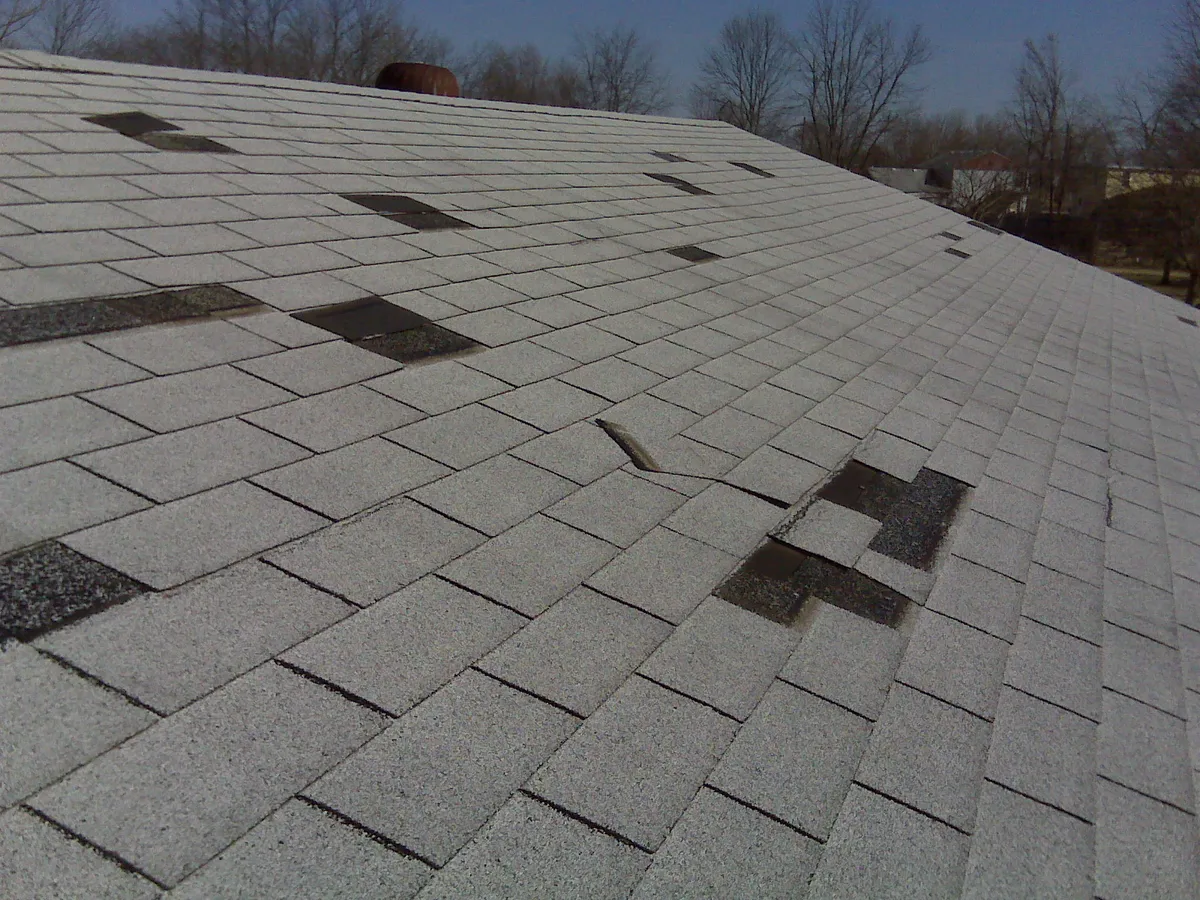Wind Damage

How to Check for Roof Wind Damage
- Perform an Outdoor Inspection: Look for missing and damaged shingles (damaged shingles might be curled, cracked, or torn) on your roof or around your property. If this type of damage is localized (i.e., it covers less than 30 percent of the entire roof), roofing repairs might be able to address the problem. More extensive damage might necessitate roof replacement. Also keep in mind that not only the roof itself, but the chimney, ventilation pipes, roof flashing, gutters and fencing can also become damaged. Be sure to inspect them for damage as well. If you suspect that your roof is damaged, here is a basic list of what to look for:
- Composition shingles: curling, loss of granulation, broken, damaged or missing shingles
- Wood shingles/shakes: Mold or decay, splitting or curling
- Flat roof: Obvious patches, cracks or tears, several blisters and/or wrinkles (also check patched areas from inside the attic)
- Flashing: Tears, buckling around roof penetrations
- Roofing cement: Excess cement, crumbling
- Soffits and fascia: Decay, stains
- Soffit and ridge vents: Clogged or damaged vents, flashing and shingles around them curling or missing
- Gutters: Decay or rust, leaky seams, loosely attached to the structure, bent or sagging, missing sections of gutter or downspout, filled with debris. Clogged gutters can easily freeze shut and cause excessive weight on gutter fasteners, ice dam conditions, and slippery walks below.
- Chimneys: Leaning, loose or missing flashing, damaged bricks, cap or cracked joints. Chimney flashing is especially prone to tearing because a chimney settles independently from the house.
- Perform an Indoor Inspection: Moisture marks, brown, yellow, or grey stains, and peeling paint on walls and/or ceilings could all indicate a damaged, leaking roof. Also check your attic for damp rafters or leaks. And if you experience a sudden surge in energy costs, it could be a sign that your roof ventilation has been compromised.
- Call in a Professional: Call in a roofer for a professional inspection. Getting on your roof yourself is not recommended as it can lead to personal injury and also further damage to your property. A trained professional also has the tools and safety techniques to get up on your roof and check for damage.
What to Do if Your Roof has Wind Damage
If you have roof damage caused by wind and/or flying debris, it’s important to get it fixed immediately. The longer you wait, the more damage will occur. Roof replacement and roof repair cost a lot less when you don’t have to add in the other costs of repairing leaks and water damage. Contact your insurance agent to assess the situation and determine whether you should file a claim. Thoroughly document any damage that occurred and keeps receipts for all work, including any you do yourself, such as covering windows or holes in your roof to facilitate reimbursement if you file a claim. Many policies will cover these expenses when submitted with a claim.